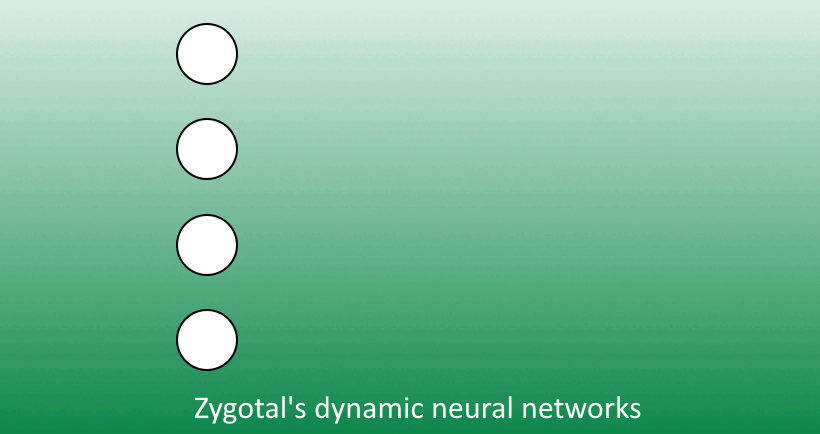
Zygotal
Building out a novel algorithm inspired by the human brain to achieve artificial general intelligence.

Overcoming traditional AI
Decades ago, it was believed that the human brain does not produce new neurons or synapses after being developed. People believed that learning only occurred through the strengthening and weakening of synapses. However, relatively recent studies have shown that even adults produce around 700 to 1500 new neurons per day with synapses connecting these new neurons. While the science on how the brain learns has changed, machine learning algorithms have not embraced this discovery. They still contain a fixed number of artificial neurons/synapses and rely on changing synapse strength only.

Growing from nothing to everything
At Zygotal, we have been working on a new algorithm for the past 10 years that allows unlimited expansion of artificial neurons/synapses. By doing this, we can constantly form new memories that allow the algorithm to learn without sacrificing the integrity of older memories. Just like a zygote, it grows from almost nothing to something complex very quickly. We believe this is the only way forward for artificial general intelligence.

Inspired by the latest scientific findings of the brain
Besides the ability to grow, our algorithm borrows many findings from cutting edge research that explores how the brain functions. Findings such as inhibitory neurons and retrograde neurotransmission are already being implemented in the algorithm allowing it to more closely mimic the human brain. And of course, we simulate the fast-spiking property of neurons which makes it even more human-like.
Using the power of the GPU to accelerate progress
Our algorithm runs on the GPU of computers and is paired with a user interface that allows us to get precise info on the current state of the artificial neural network. This interface has been key to the development of the algorithm. When we want to try a new idea, we can quickly implement this idea in the interface and gain feedback quickly.

Continuously learning
Even when all sensory input is removed, our algorithm still thinks on its own. This is similar to how humans can imagine things when its eyes our closed. It is constantly changing and thinking.